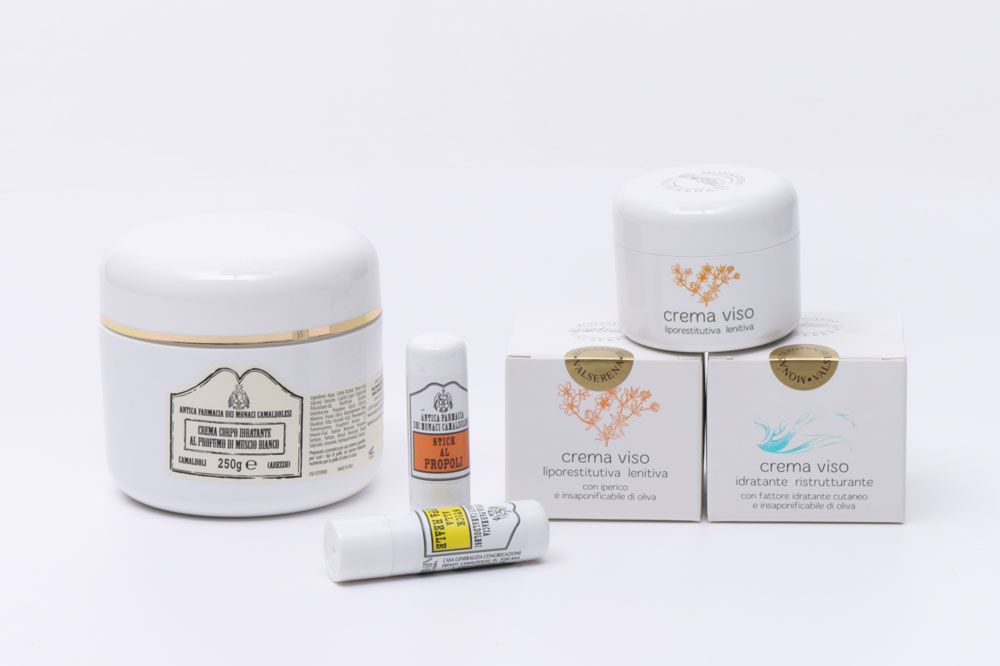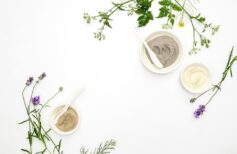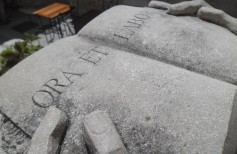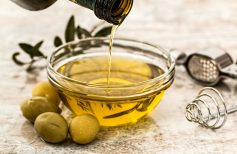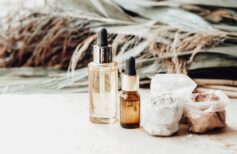Contents
Since their origins, monasteries have not only been centres for meeting and prayer, but also the guardians of ancient knowledge, bulwarks of faith and spirituality even in times when ferocity and barbarism dominated the known world. The fall of the Western Roman Empire (476 AD) and the barbarian invasions, created a general climate of fear and uncertainty, erasing, in an often irremediable way, the memory of the great civilizations of the past. The task of preserving the precious manuscripts that escaped destruction, and, more generally, of passing on the knowledge of the West, was entrusted to monasteries and abbeys. But that’s not all. Monasteries, particularly the Benedictine monks, who made the work of worship the very symbol of their order (“Orat Et Labora”), catalysed the economic, commercial and social development of many regions around their buildings.
In addition to copying books and codes, some handed down to us due to the work of a skilled amanuensis, and watching over Christian communities, from the Middle Ages onwards, monasteries were places where the use of plants and medicinal herbs to produce healing compounds was studied and effective remedies for all kinds of diseases were discovered. The ancient Greek and Latin texts had devoted ample treatment to the study of natural medicine, not to omit the even more advanced medical knowledge of the Arabs, which had to be safeguarded and disseminated.
Christianity in particular, embraced what was called Galenic medicine, which derived from the theories of the physician Galeno, the most significant of those who lived in Roman times. A Greek, originally from Pergamon, he followed the same clinical approach as Hippocrates, but combined it with the philosophical approach of Aristotle, according to whom, on a medical level, every effect was determined by a cause. A principle which, although on an exquisitely spiritual level, also belonged to Christian philosophy, which is why the doctor’s theories were embraced and followed with conviction for a long time.
Another task of the monks was to gather the raw materials for manufacturing the drugs. To start with, monastic communities limited themselves to gathering wild herbs from the meadows and woods around the buildings, but soon within the walls of monasteries and abbeys, monks began to create medicinal herbs gardens, which supplied them with the ingredients they needed to make their medications.
In this way, enchanting places began to arise, which not only recalled the beauties and delights of the earthly Paradise, but also proved to be very useful for providing the raw materials for medicine, even in times of war, when it was impossible to venture outside to collect what was needed.
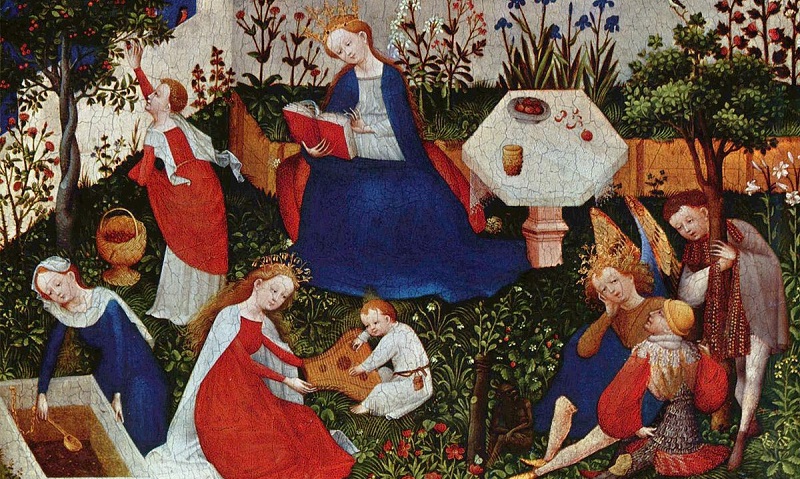
The ‘Hortus conclusus’, or enclosed garden, was a genuine garden, where everything spoke of beauty and harmony, full of bright flowers, fruit trees and fountains.
Next to it the Hortus simplicium, the Orto dei Semplici, housed exactly the necessary herbs from which to extract the precious natural healing principles. These principles extracted directly from nature, were called “Simple”, to distinguish them from “Composite Medicines”, which were obtained by treating the medicinal plants in various ways, cooking, drying, macerating and mixing according to the ancient knowledge.
Over time, the monks deepened their medical knowledge, gathering the testimonies of travellers who came from everywhere and were hosted in their forests. While the outside world was changing, devastated by wars and pestilence, the patient, constant work of these men of faith, who belonged to different orders, but were united by the desire to learn more to benefit people, never ceased.
And it continues to this day. Nowadays, many monasteries have sales outlets inside them, where monks sell natural products for the health, healing remedies and even cosmetics and perfumes, in mass-produced packs. What’s more, many online stores offer products made by the monks, and make them available for purchase all over the world. But the most fascinating fact is that everything once created by the wise hands of the monks and herbalists, is still being prepared by following the same recipes, the memory of which has been lost to the indistinct echoes of history, but remains a secret and fascinating prerogative of these timeless communities.
The Camaldoli Monastery – an ancient pharmacy
Consider, for example, of the monastery at Camaldoli, and, in particular, its ancient pharmacy. Camaldoli is one of the most important examples of activities carried out by monasteries from the Middle Ages onwards. Founded in 1025, it quickly gave life to one of the largest and most active Benedictine communities in the West, and became not only a religious and spiritual centre, but also the cultural heart and collection point for ancient knowledge from our territory, and much more.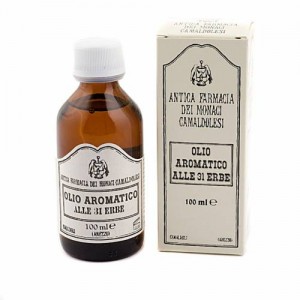
From 1046, the Camaldoli monastery housed a small hospital, which provided free support to those living in the areas nearby and to pilgrims passing through. The hospital was combined with a galenic laboratory, a Pharmacy practical, where the monks made the medicines needed for the hospital’s activities using herbs as ingredients.
That pharmacy still exists now, and there are ancient recipes dating back to the fifteenth-sixteenth century, in addition to the tools used by those ancient herbalist monks.
The products manufactured by the monks of Camaldoli ranged from antidotes to toxins, warming ointments, balsamic potions, tonics, antiseptic plasters, as well as essential oils and cosmetic products for cleansing and beautifying the body. Many of these products are still packaged and sold by the Camaldoli monks today. One for everyone, is Oil 31, a real panacea for endless disorders, major and minor. It’s an oil that is distilled from thirty different herbs mixed together using a recipe handed down for centuries, for creating a product with incredible virtues refreshing, balsamic, toning and disinfectants. In addition to Oil 31, the ancient pharmacy at the Camaldoli monastery still offers an endless variety of natural products for the care and regeneration of the body, like creams for the skin of the face and body, shampoos, essential oils, bubble baths, balsams, natural toothpastes, perfumes and other cosmetic, curative and soothing products.
Calendula Cream

Among the curative and cosmetic products produced at the Camaldoli Monastery, a special mention should be made of the face creams.
Its marigold cream, for example.
Calendula is a herbaceous annual plant, with characteristic yellow-orange flowers collected in the flower heads, from which a series of substances with exceptional beneficial properties are extracted. In addition to the precious essential oil, the flowers of the calendula contain flavonoids, which are powerful antioxidants, very useful to prevent serious diseases; triterpenoids, which have a great pharmaceutical versatility; sterols, which fight ‘bad’ cholesterol; carotenoids, which slow down the formation of free radicals; pyrogallic tannins, with powerful astringent, antibiotic and haemostatic functions.
In addition to the many uses to which it is suitable in the field of medicine, calendula is very valuable also in the production of creams for the face and body.
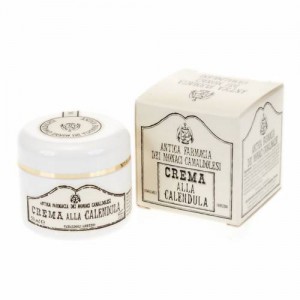 Calendula cream is manufactured according to an ancient recipe from the Camaldolese Monks, is exceptionally nutritious, emollient and rich. In fact, it contains all the properties of calendula officinalis described above. This cream has incredible antibacterial and lenitive properties, which make it effective for a whole range of uses, from mosquito bites, to the treatment of boils, small burns, and couperose to herpes. Its composition, which is high in nutrients and beneficial substances, promotes the regeneration of tissues and the healing of wounds, and ensures a constant antiseptic and disinfectant action. It is also suitable for small burns. But we shouldn’t forget its exquisitely aesthetic properties too. All of its distinguishing characteristics, in fact, make it a precious ally for the care and beauty of all types of facial skin. It is especially suitable for dry and delicate skin. It’s amazing refreshing and protective power helps the skin to cope with everyday stress, keeping it fresh and hydrated. Calendula cream renovates cells and prevents the signs of aging, smoothing the first wrinkles and giving the skin brightness, firmness and turgidity. Used over the entire body, it also has a highly soothing effect after exposure to the sun.
Calendula cream is manufactured according to an ancient recipe from the Camaldolese Monks, is exceptionally nutritious, emollient and rich. In fact, it contains all the properties of calendula officinalis described above. This cream has incredible antibacterial and lenitive properties, which make it effective for a whole range of uses, from mosquito bites, to the treatment of boils, small burns, and couperose to herpes. Its composition, which is high in nutrients and beneficial substances, promotes the regeneration of tissues and the healing of wounds, and ensures a constant antiseptic and disinfectant action. It is also suitable for small burns. But we shouldn’t forget its exquisitely aesthetic properties too. All of its distinguishing characteristics, in fact, make it a precious ally for the care and beauty of all types of facial skin. It is especially suitable for dry and delicate skin. It’s amazing refreshing and protective power helps the skin to cope with everyday stress, keeping it fresh and hydrated. Calendula cream renovates cells and prevents the signs of aging, smoothing the first wrinkles and giving the skin brightness, firmness and turgidity. Used over the entire body, it also has a highly soothing effect after exposure to the sun.
Other valuable products
Even avocado is an excellent beauty ally. The Camaldoli monks discovered it and made it the basic ingredient of many products dedicated to the care and beauty of the face and body.
Avocado oil serves as a base for these products; rich in vitamin A, group B vitamins, vitamin D, unsaturated fatty acids (‘good’ fats), as well as lecithins, antioxidants and mineral salts. All these substances naturally stimulate cell regeneration, with a moisturizing, anti-wrinkle and firming effect.
The avocado oil from the Camaldoli Monastery is absorbed on light massage and is suitable for care of the face and neck skin, but not just that. Even the body can gain exceptional benefits, thanks to its toning properties, which tone the tissues of the legs, buttocks and abdomen, and shrinks stretch marks. The high content of vitamins and nutrients makes it suitable for well-being of the hair, for which it can be used as a compress that regenerates and renews dry and dehydrated hair.
Likewise avocado cream restores tone and elasticity to tired skin, making it look more relaxed and youthful. Ideal as an intensive beauty treatment, it has to be applied at night to nourish and moisturize the skin of the face. It penetrates deeply, without being greasy, prevents wrinkles from forming and reduces those that already exist and generally makes the skin of the face look revitalized and rested.
Another very effective product for the care of the face and its natural beauty is the beeswax cream, always produced in the Camaldoli Monastery. Produced by bees, it contains water-repellent lipids and other precious substances that create a sort of emollient and protective film on the epidermis. This film protects the skin from atmospheric agents, and keeps its hydrated, making it fresher and younger. The beeswax cream also has remarkable healing and purifying properties, thanks to the vitamin A and carotenoids it contains. Highly effective against cracking, it protects the skin of the face from cold air and wind in the winter season and regenerates it naturally.
There is also a face cream with olive oil to prevent skin aging and guarantee hydration. The high content of unsaturated fatty acids, vitamins and olive oil antioxidants makes it a panacea to keep even dry skin elastic, young and fresh. Olive oil produces a natural protective film that prevents the dehydration and peeling of the epidermis. It also nourishes and moisturizes deeply, with an emollient and refreshing effect.

